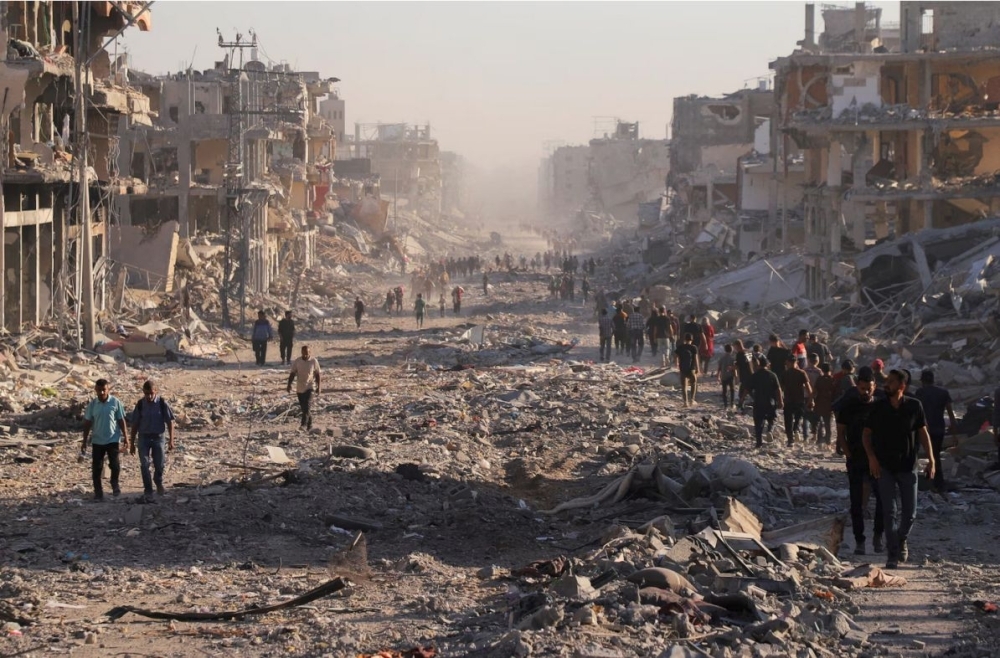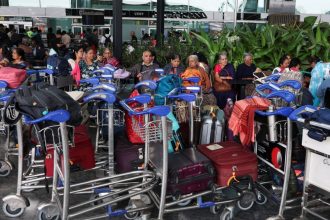A fragile calm settled over Gaza on Friday as thousands of Palestinians began the long walk home — not to houses, but to ruins. After the ceasefire took hold and Israeli forces started to pull back, families displaced for years trekked northward along the coastal roads, facing the harsh reality of what was left behind.
Entire neighborhoods that once pulsed with life now lie flattened. “Thank God my house is still standing,” said Ismail Zayda, 40, from Gaza City’s Sheikh Radwan district. “But the place is destroyed, my neighbours’ houses are destroyed, entire districts have gone.”
In Khan Younis, Gaza’s second-largest city, scenes of devastation stretched endlessly. Among the rubble, Ahmed al-Brim pushed a bicycle loaded with scrap timber — all that was left of his home. “We couldn’t get the furniture, or clothes, or anything, not even winter clothes,” he said softly. “Nothing is left.”
Palestinian health authorities reported the recovery of over 100 bodies from areas vacated by the Israeli army. The ceasefire — brokered as part of U.S. President Donald Trump’s 20-point peace plan — marks the most significant step yet toward ending the two-year conflict.
Speaking from the White House, Trump expressed optimism. “They’re all tired of the fighting,” he said. The first phase of his plan gives Israeli troops 24 hours to retreat from Gaza’s urban areas, though they’ll still control much of the territory. The next stage involves forming an international “Board of Peace,” to be led by Trump and joined by former British Prime Minister Tony Blair.
But Hamas quickly rejected any “foreign guardianship,” insisting that Gaza’s governance remains a purely Palestinian issue.
In a televised address, Prime Minister Benjamin Netanyahu declared, “If Hamas disarms the easy way, good. If not, it will be the hard way.”
Despite political uncertainty, the human spirit pressed on. Streams of people poured back into the desolated streets, some clutching memories, others simply holding on to hope. “There are no homes, but we’re happy to return even to the rubble,” said Mahdi Saqla, 40. “After two years of displacement, to be home — even like this — is still joy.”
The ceasefire includes an exchange: 20 Israeli hostages for nearly 2,000 Palestinian prisoners. Humanitarian trucks loaded with food and medical supplies are expected to enter Gaza daily.
Hamas leader Khalil al-Hayya, speaking from exile, said he received assurances from mediators that the war was over. Yet, deep uncertainties remain — from Gaza’s future governance to whether this ceasefire can truly hold.
For now, as the sun sets over a battered Gaza, what remains is not just rubble, but resilience — and a quiet hope that this fragile peace might finally be the beginning of healing.








